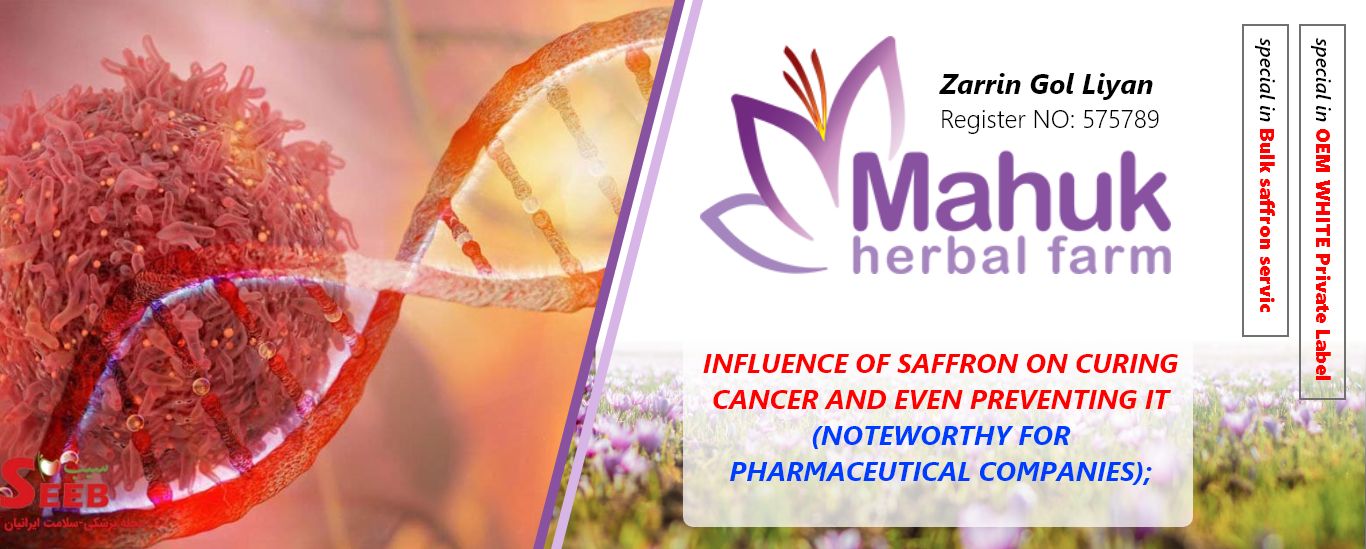

Influence of saffron on curing cancer and even preventing it
Saffron contains different kinds of herbal combinations that work as anti-oxidants. Molecules that protect your cells against free radicals and oxidation.
Nowadays one of the most important widespread causes of death on global levels is cancer, the rampancy and mortality rate of cancer in Iran is considerable.
On the other hand, we reviewed some of the anti-tumor characteristics of saffron’s stigma and some of its practical mechanisms in macro-molecules, cellular and organic models, considering the fact that saffron is an endemic herb of south Khorasan.
Stigma of saffron contains 150 chemical substances and its worth to mention the exiting Carotenoids like Crocetin among them, the substance that is known as an anti-cancer factor.
Another Carotenoid is Crocein, this substance is responsible for the yellow color of saffron.
Saffron in traditional medicine
In traditional medicine stigma of saffron was used as an herbal combination to cure a lot of diseases such as diabetes, blood pressure and cancer, as well as the result of modern medicine researches that shows that the stigma of saffron and its secondary metabolites could be used to produce supplementary drugs related to the curing different types of human cancers.
The stigma of saffron is specialized to prevent the growth and reproduction of cancer cells while there would be no influence on the growth of normal cells, also it could reduce the side effects of common cure.
The main metabolites of saffron’s stigma includes Monoterpene aldehydes and Carotenoids, and among the Carotenoids of stigma Crocetin and Crocein have more anti-oxidant, anti-tumor and anti-mutagenicity effects compared to other substances.
The current study showed positive effects on controlling breast, pancreas and lung cancers.
Also these studies indicate that anti-tumor drugs derived from stigma of saffron could be used in near future as a supplementary cure that is safe and promising for different types of cancer.
Study Type: Review
Subject: Biochemistry
Collectors: Reyhaneh Hoshyar *, Seyedeh Elham Mostafavinia, Seyedeh Zahra Batahi
Iran University of Medical Sciences



